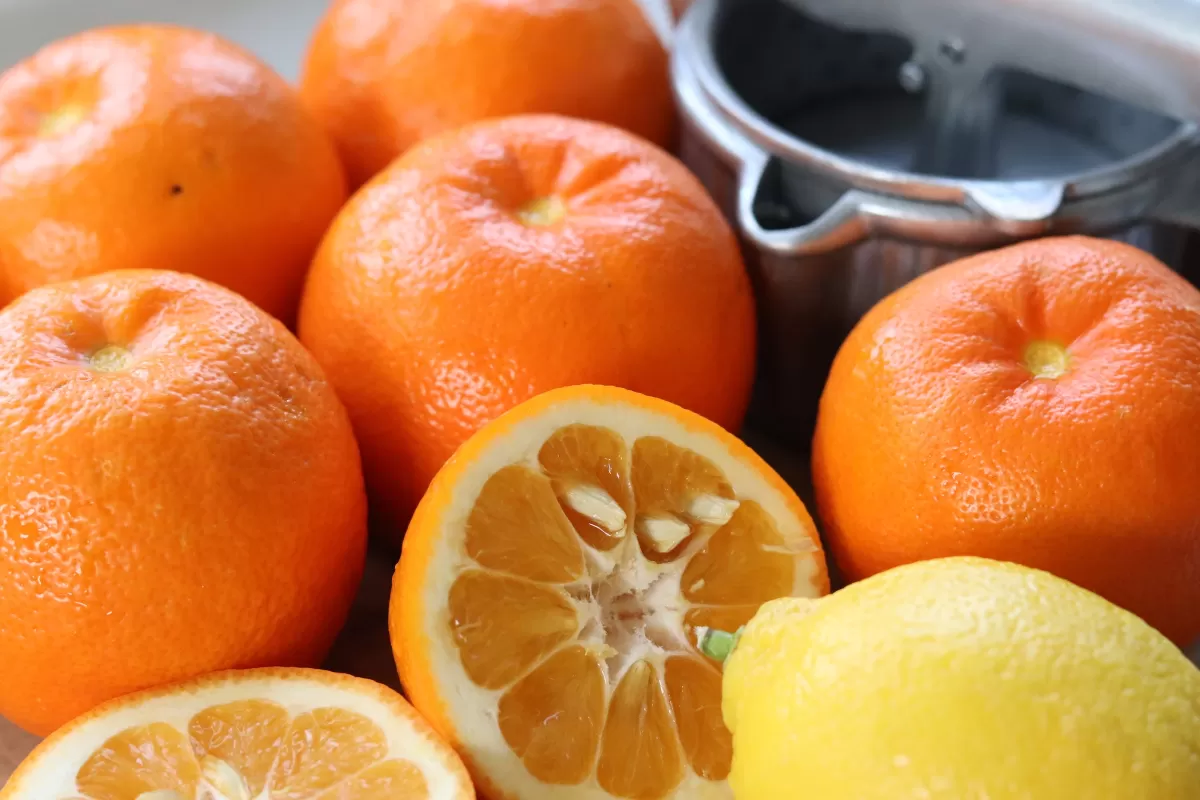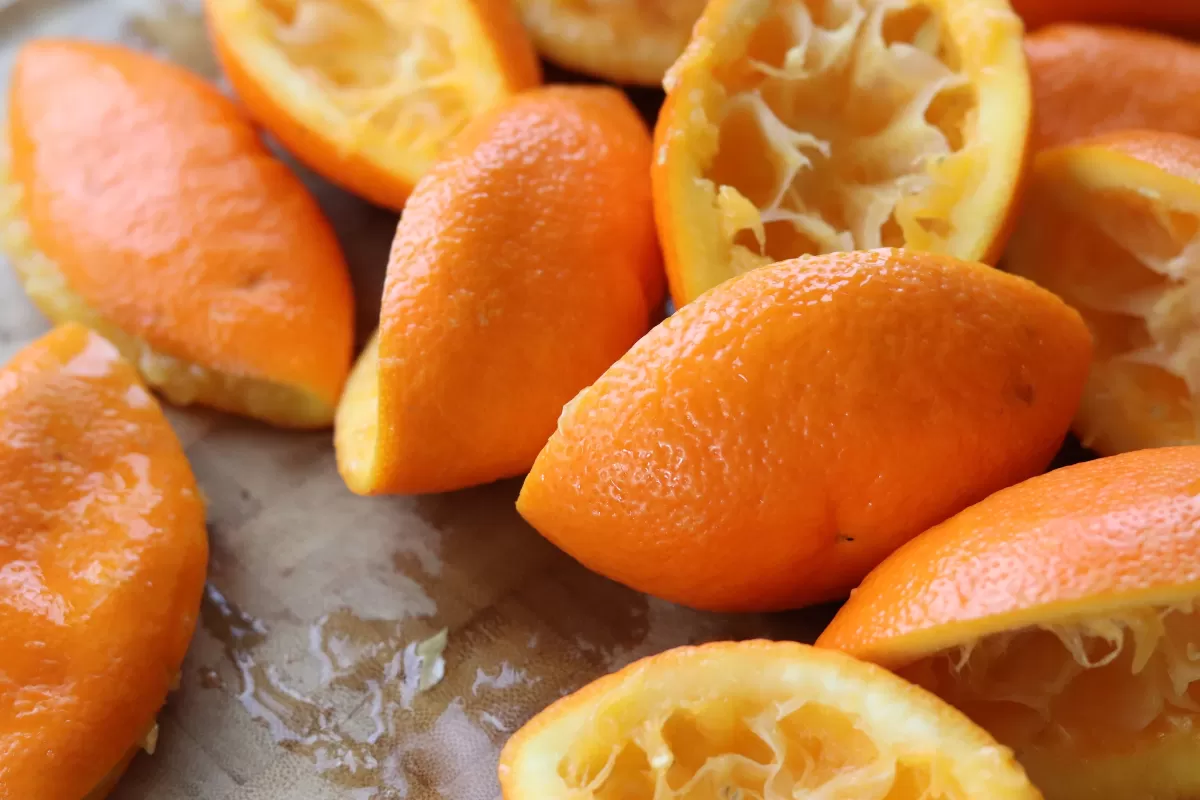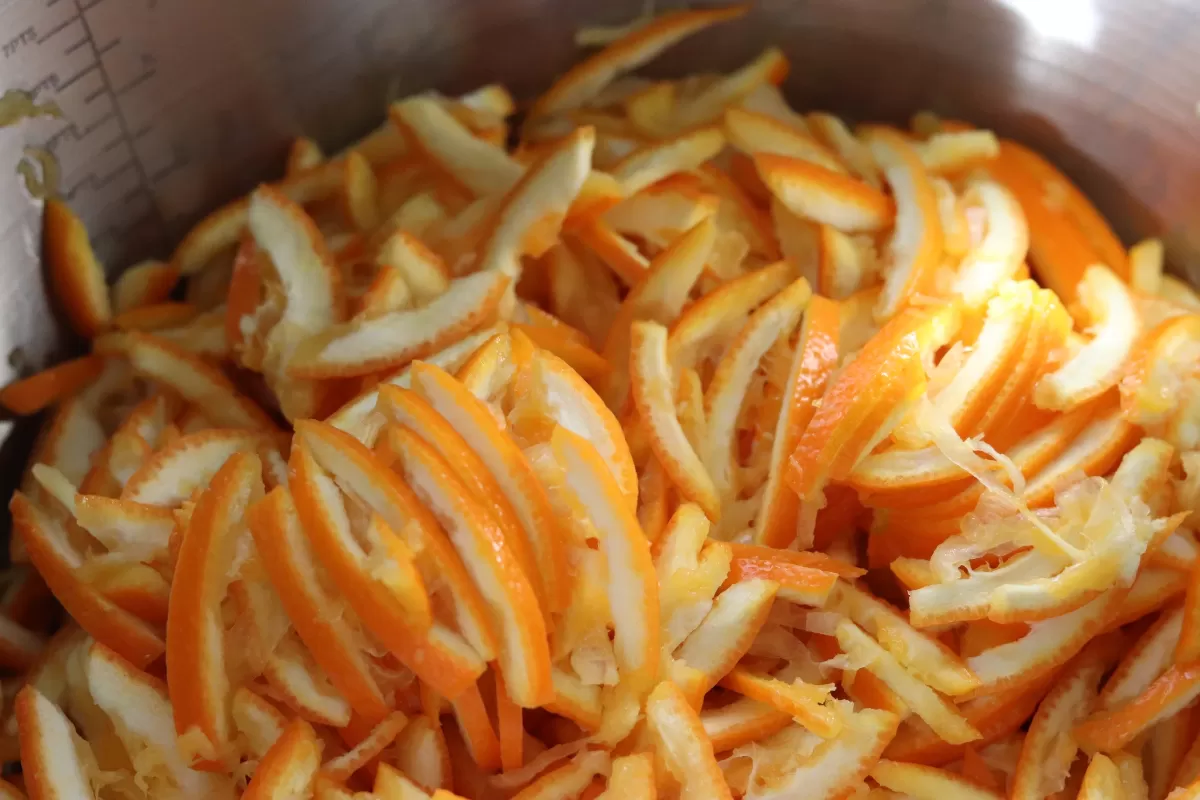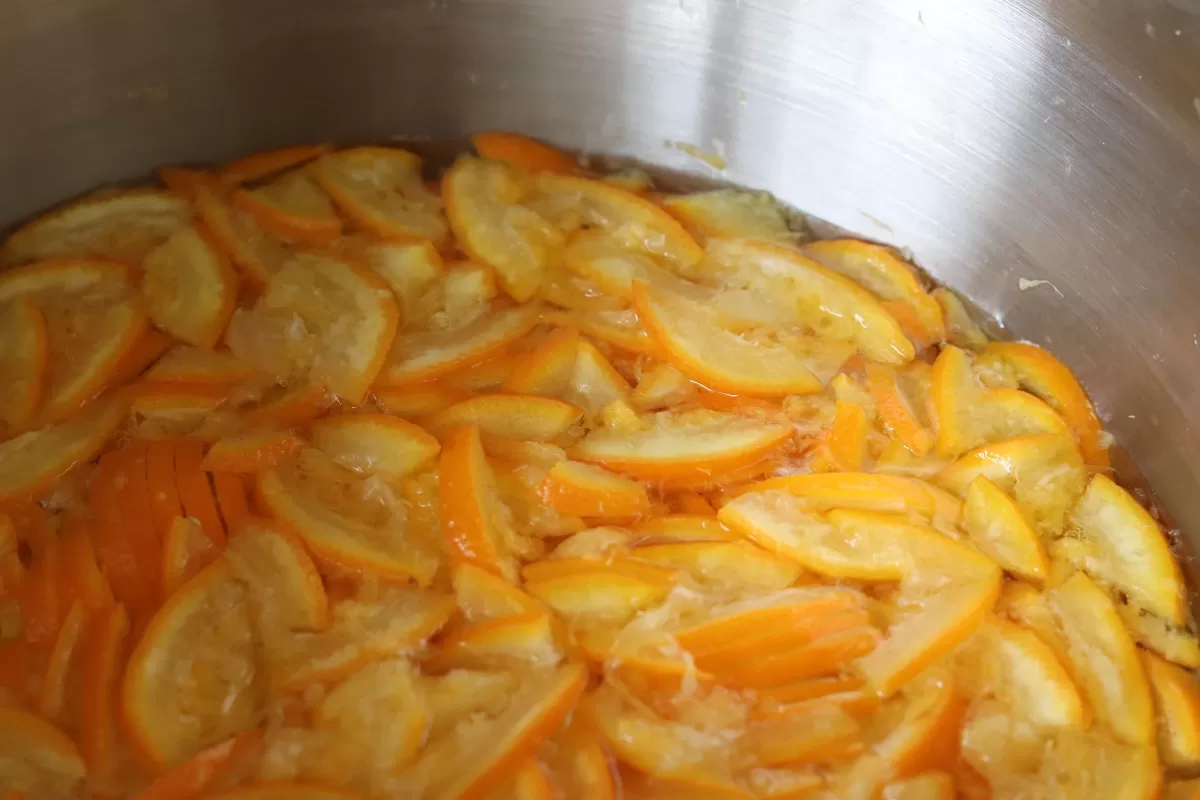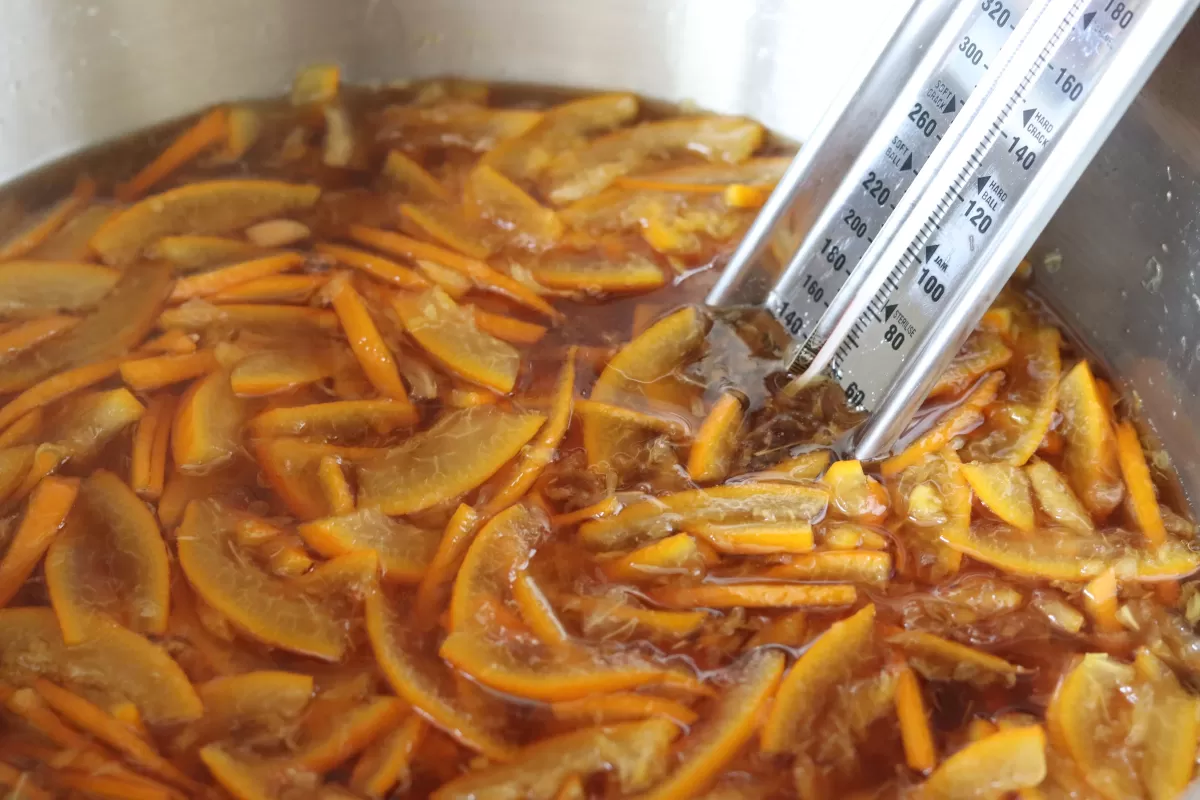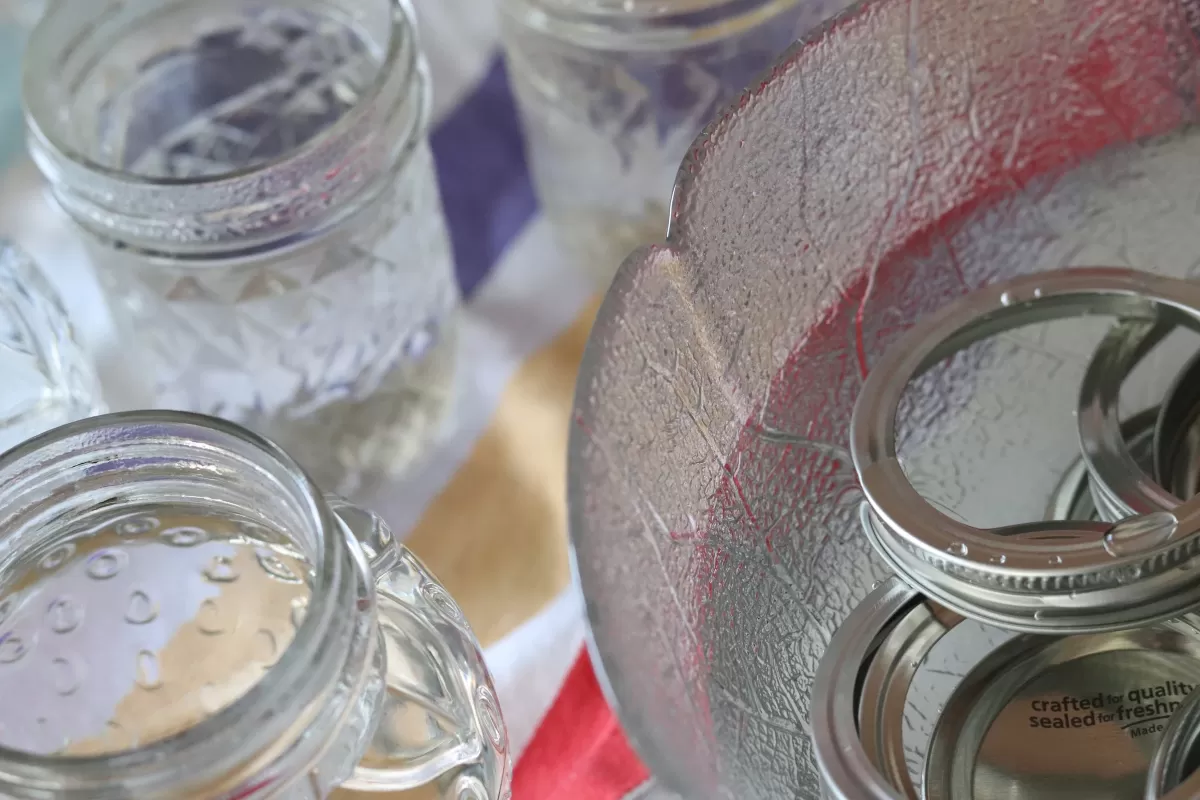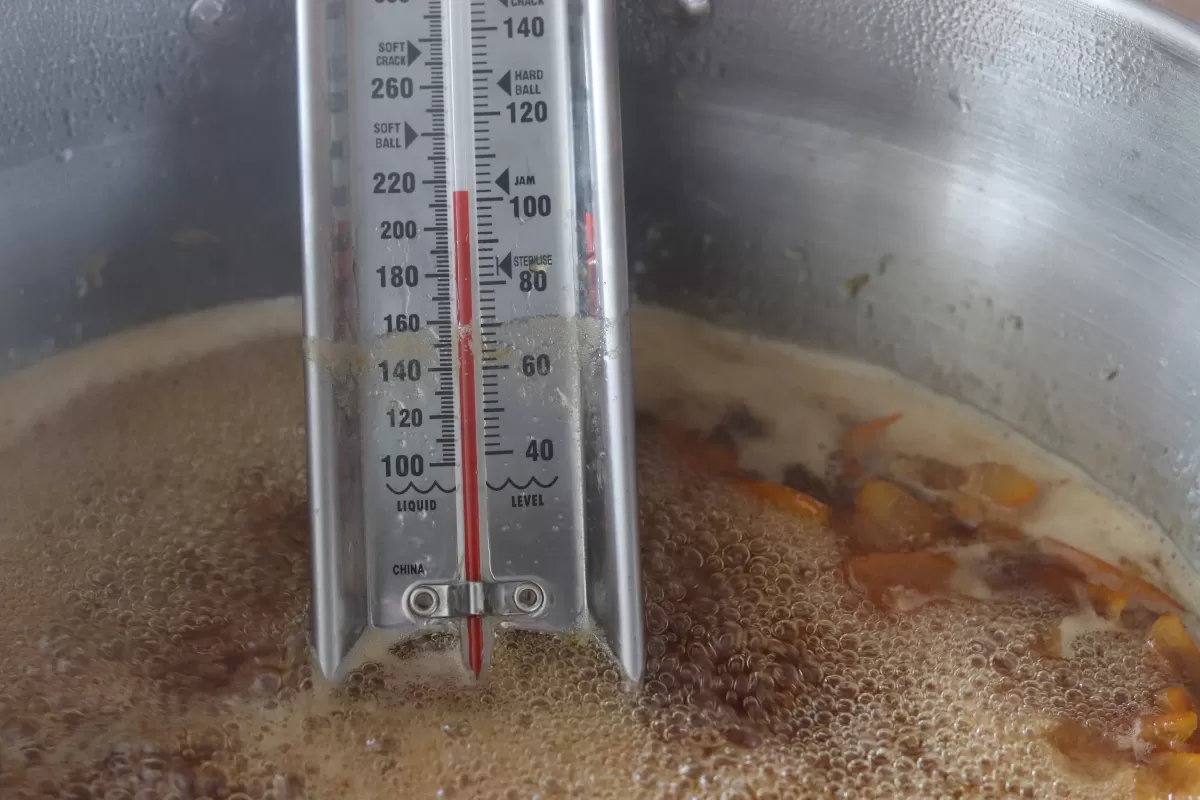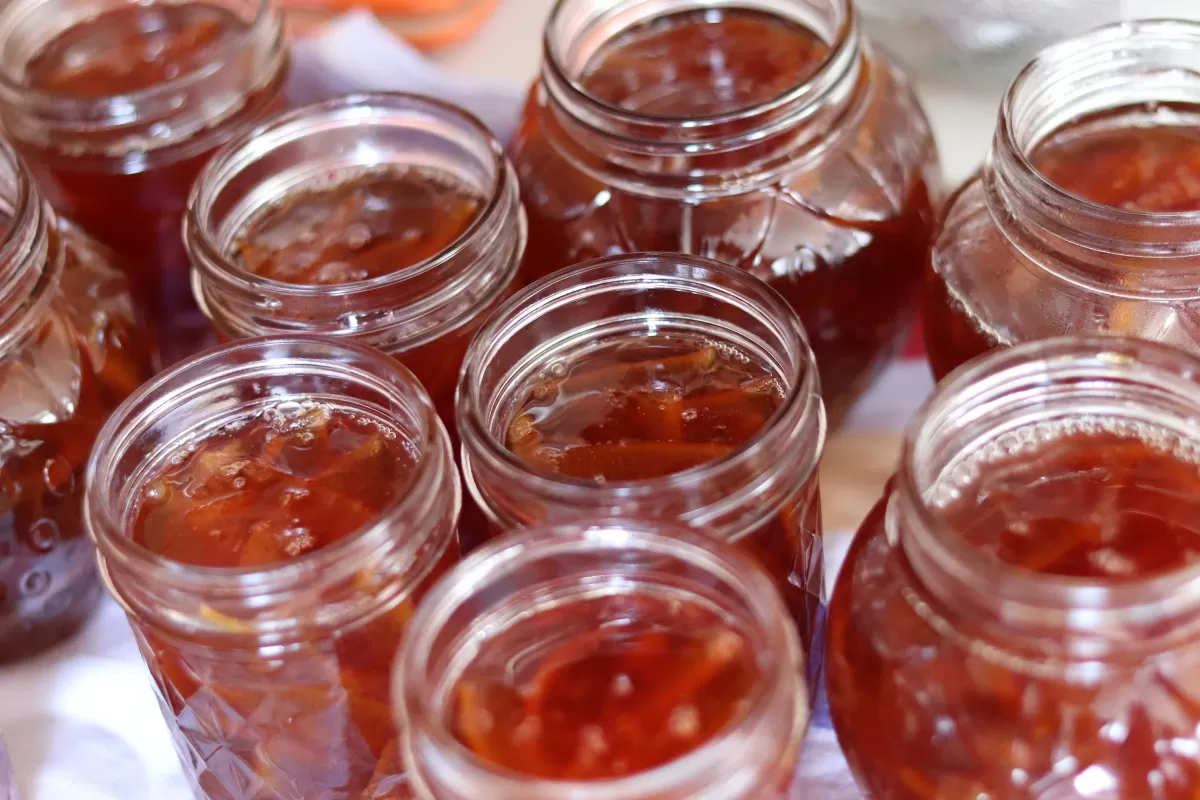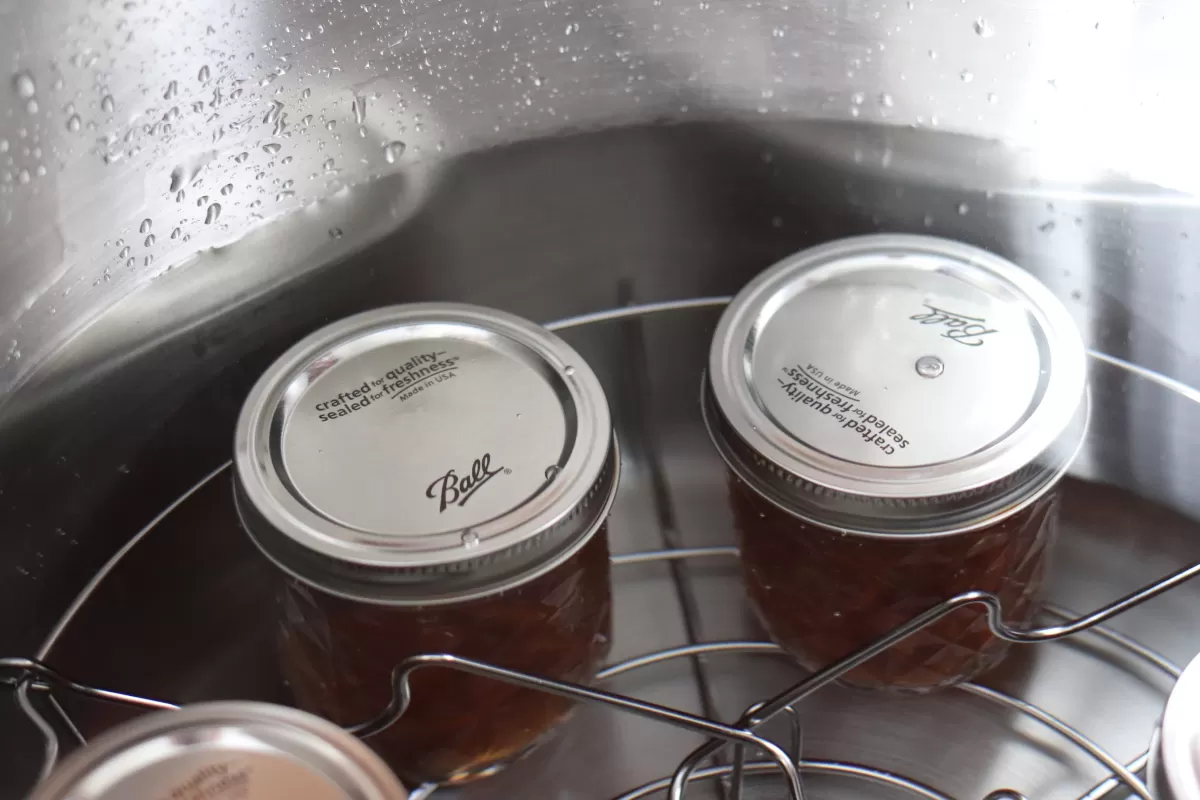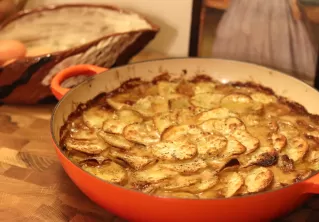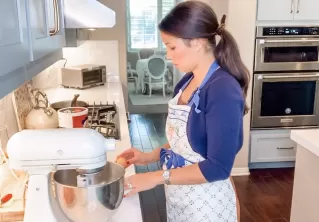Classic Breakfast Marmalade
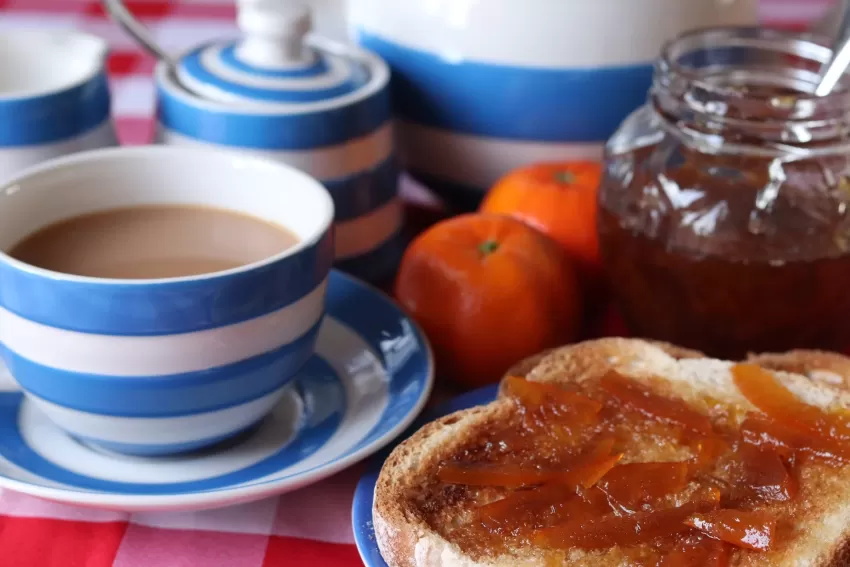
In 1524, it was documented that England’s most horrid husband, King Henry VIII (who else would it be), received a “box of marmalade” from Mr Hull of Exeter. As it was in a box, this was likely “marmelada”, a solid paste made of quinces from Portugal, which is still made and sold in southern Europe. “Marmalado” was also rumoured to be a favourite treat of Anne Boleyn and her ladies in waiting. 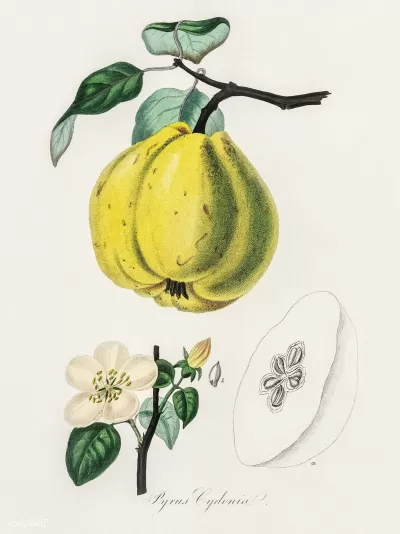 A handwritten English recipe book dating from 1677 belonging to Eliza Cholmondeley, and held in Chester city archives, has one of the earliest marmalade recipes closer to what we know as marmalade today, named “Marmelet of Oranges”, which produced a firm, thick dark paste. The Scots are credited with further developing marmalade as a spread, with Scottish recipes in the 18th century using more water to produce a less solid preserve.
A handwritten English recipe book dating from 1677 belonging to Eliza Cholmondeley, and held in Chester city archives, has one of the earliest marmalade recipes closer to what we know as marmalade today, named “Marmelet of Oranges”, which produced a firm, thick dark paste. The Scots are credited with further developing marmalade as a spread, with Scottish recipes in the 18th century using more water to produce a less solid preserve.
It is they who moved marmalade to the breakfast table, and in the 19th century the English followed the Scottish example and abandoned the eating of marmalade in the evening. Marmalade’s place in British life appears in literature. Diarist James Boswell remarks that he and literary master Samuel Johnson were offered it at breakfast in Scotland in 1773. When American writer Louisa May Alcott, described “a choice pot of marmalade and a slice of cold ham” as “essentials of English table comfort”.
A choice pot of marmalade and a slice of cold ham are essentials of English table comfort. Louisa May Alcott
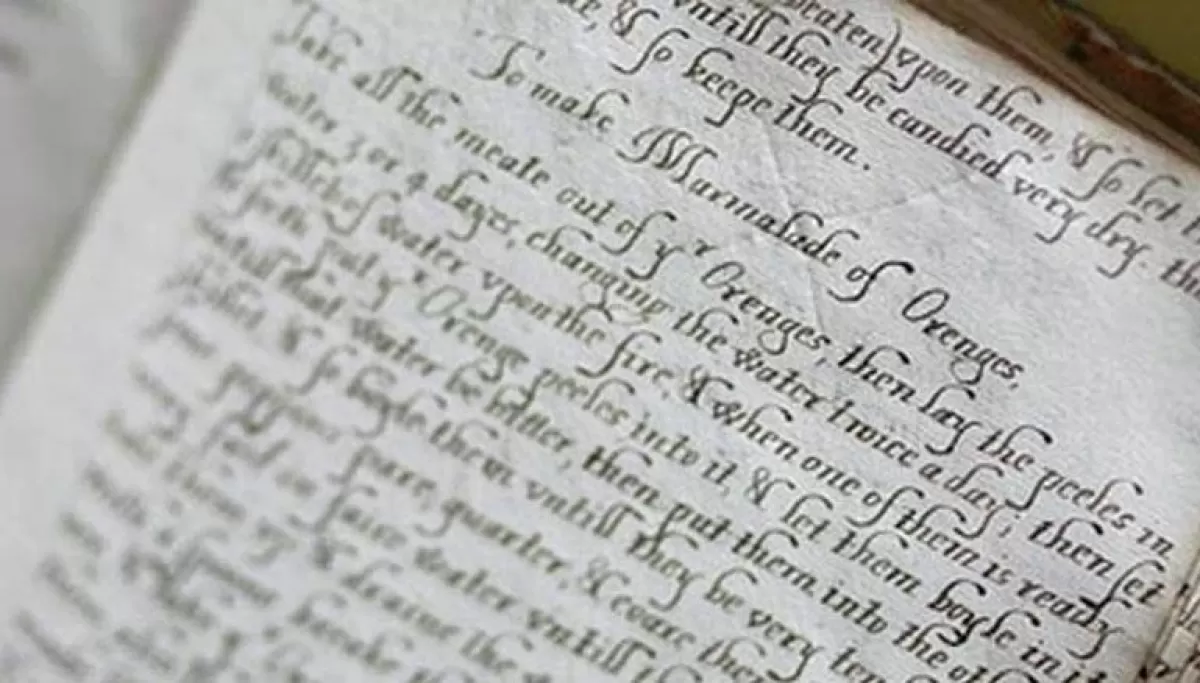
Even the breakfast spreads most iconic champion, Michael Bond’s 1958 creation, Paddington Bear managed to travel all the way from Darkest Peru in a lifeboat surviving on nothing but marmalade sandwiches. He knew a thing or two about good food.
If it’s good enough for a best-loved bear in children’s literature, then we love it too!  January-early March is prime season for marmalade making, and one solid kilo of these fine orange orbs can see you through and entire years worth of happy breakfasts, and it also goes deliciously with baked ham. Today, I’m sharing my favourite tried-and-tested recipe for this super sunny spread.
January-early March is prime season for marmalade making, and one solid kilo of these fine orange orbs can see you through and entire years worth of happy breakfasts, and it also goes deliciously with baked ham. Today, I’m sharing my favourite tried-and-tested recipe for this super sunny spread.
![]()
How to make Homemade Marmalade
Yield: 1 kilogram will yield roughly 12 x 240ml jars, less jars the larger size you use.
Serves: a dozen hungry Peruvian Bears, or a year’s worth of Marmalade for a family of 4.
Storage: Store for up to a year in a cool dark place, or more if you water-bath process your jars for long-term food storage.
Homemade Marmalade ingredients:
- 1kg (2.2lbs) which equates to the weight of roughly 7 or 8 large Seville Oranges - choose the best looking specimens you can. Ideally no bruises or scarring.
- 2kg (4.4lbs) of Demerara sugar.
- 3 unwaxed lemons, juiced, to make 75ml (0.3 cups).
- 2.5ltrs (0.5 gallon) litres fresh cold water.
Equipment required for making marmalade:
- A large, deep stock pot or Maslin Pan suitable for jam making.
- Sharp paring knife.
- Jam Thermometer.
- Clean, sterilised jars, with lids, I like Ball Jars. I used 6 x 240ml/8oz, and 3 x 340ml/10oz jars.
- Jam or canning funnel.
- Water bath canner if you wish to process your marmalade for long-term storage, I use a Kilner Canner.
Before you decide to make any food produce intended for long term storage, it is imperative you read up on how the process works, and best practice. My favourite book on the subject is Ball’s Complete Book of Home Preserving - it’ll teach you the science behind it all and how to do it safely.
Contracting botulism through poorly prepared foods is no fun, but don’t be too put off giving it a go. Once you get the hang of the approach to home canning you’ll soon be leafing through hundreds of recipes trying to figure out what else you can make at home to save on your food bills!
Aside from the initial outlay for the equipment - priced up, this Marmalade took me only 3 hours of labour time (spread out over two days), and I spent around £4 in total for the oranges, lemons, and sugar. Not a bad price for nine jars of delicious homemade marmalade to last us all year! A jar of Marmalade a month, at roughly £1.40 per jar means I have saved almost 75% by making it at home. However, I gained back so much more than the money - the satisfaction of knowing you made it yourself, and your family appreciating it that little bit more is simply priceless.
![]()
Seville Orange Marmalade recipe instructions.
- Scrub your oranges and lemons clean, removing the ‘green buttons’ where they were attached to the tree. Set lemons aside

- Using a sharp knife, cut all of your oranges in half across the horizon, squeezing the juice from those halves into a jug or bowl.

- Discard any pips from the insides of the oranges, and using a sharp paring knife, carefully slice the peel into equal size strips, leave chunky if you like big shreds like we do, or slice thinly and halve the long strands for smaller shreds. You can also make shred-less marmalade (see recipe book suggestion below in footnotes).

- Place the shreds of orange slices in a clean maslin/jam pan, and cover with the orange juice, and 2.5 litres of fresh cold water.

- Cover the pan with plastic wrap or a beeswax cloth, and leave to infuse and let the peel soften overnight.
- After 24 hours, set the pan on a burner, and bring to a boil.
- One the mixture is boiling, set to a simmer and allow to ‘cook down’, uncovered for 2 hours. The liquid volume will reduce by around a third.

- Meanwhile, sterilise your jars, and put aside. It is best to keep them warm. I like to fill mine to the brim with boiling water, pouring this out only moments before I fill with marmalade.

- At this point, stir in the lemon juice and all of the sugar and bring to a rapid, rolling boil to dissolve the sugar.
- After about 20-25 minutes the marmalade should have reached setting point, click here to learn how to test for this. A jam thermometer will register at 105*C (220*F). If any scum rises to the top, you can gently spoon this off and discard.

- Remove from the heat and leave to cool for 8-10 minutes. Stir to disperse the peel, and then ladle into the empty, sterilised jars.

- Seal each jar immediately. If you are not water-bath canning, label with the date and store in a cool, dark and dry place until you are ready to use.
- If you are choosing to water-bath can your jars, leave without labels and process these only after your jars have cooled as they will be too hot to handle for a while. Once cooled and airtight, label and store.

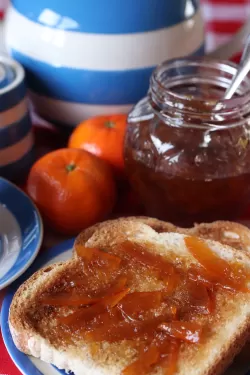
Once complete, stand back and admire your hard work! You can now gift your jars of delicious marmalade to friends and family, or squirrel away and store in a cool, dark place to bring out on those mornings when you fancy a bit of sunshine on your plate.
I hope you enjoyed this recipe, do let me know if you make it.
Happy preserving!

£4.50)
Kitchen Management Manual
Printable PDF housekeeping handbook
- Meal Planner
- Shopping List
- Recipe Card
- Pantry & Freezer Guides
- Seasonal Food Guides
- Conversion Charts
- FREE BONUS Laundry Tips!
Recommended books for home preserving
This recipe was adapted from The River Cottage Handbook of Preserves it also has some wonderful alternative recipes for shred-less marmalade.
For more safety information on preserving, I recommend the Ball Complete Book of Home Preserving
With thanks to Cornishware, for the gorgeous tea set gifted on a previous collaboration.
If you found this post useful, would you kindly consider supporting the blog and buying the author a one-off cup of tea?
All content and images in this article are copyright of The Darling Academy and are not to be shared or reproduced without our express permission. Image of Eliza Cholmondeley's manuscripts via www.dalemain.com Paddington Bear: credit PA Affiliate links have been used in this post.

